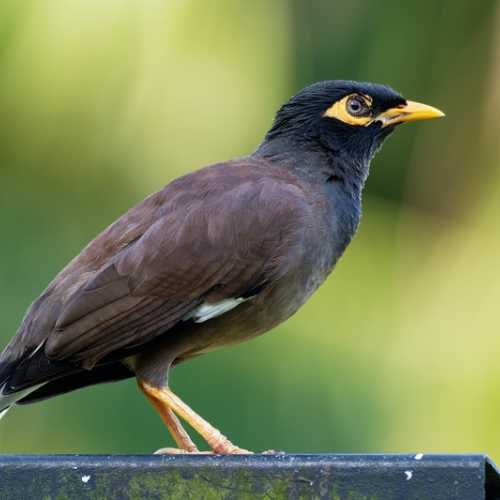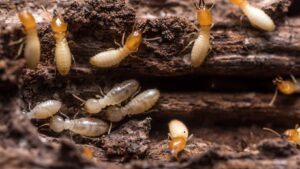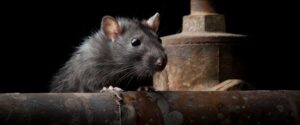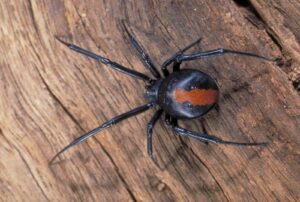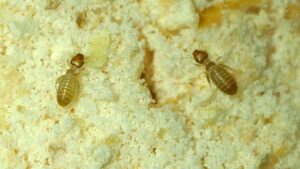Indian Myna (Acridotheres tristis)
When it comes to bird species in Central Coast and Lake Macquarie, NSW, Australia, the Indian Myna is one that is often met with mixed feelings. These birds, also known as Common Mynas, are not native to Australia but have established populations in many urban and suburban areas across the country. In this comprehensive guide, we delve into the biology, behaviour, impacts, and management of Indian Mynas, including the protection of solar panels from their activities.
Biology and Characteristics of Indian Mynas:
- Size: Indian Mynas are relatively small birds, typically measuring between 22-23 cm in length.
- Color: They have a dark brown body with a black head. Distinctive features include a bright yellow beak, legs, and eye patch.
- Physical features: Indian Mynas have a strong, straight beak and a short tail. Their wings are rounded, and they have a prominent white patch when in flight.
Behaviour and Habitat:
Indian Mynas are highly adaptable and opportunistic birds. Originally from Asia, they have successfully colonised various parts of the world, including Australia. In Central Coast and Lake Macquarie, they are commonly found in urban and suburban areas, especially around human habitation. They are attracted to these environments due to the abundance of food and nesting opportunities.
These birds are omnivorous, feeding on a variety of foods such as fruits, seeds, insects, and human waste. They are known for their bold and aggressive behaviour, often outcompeting native bird species for food and nesting sites. They breed prolifically, with a pair potentially producing up to 12 chicks in a year, further exacerbating their invasive nature.
Impacts of Indian Mynas:
Indian Mynas pose several challenges to local ecosystems and human communities. They compete with native bird species for resources, which can lead to a decline in the populations of these native species. They are also known to spread diseases and parasites that can affect other birds, animals, and even humans.
In urban environments, Indian Mynas can become a significant nuisance. They create noise, especially during their early morning and late evening chattering sessions. Their droppings can cause damage to buildings and vehicles, and they are known to infest roof cavities, causing structural damage and creating a fire risk with their flammable nesting material.
One specific area of concern is the damage they can cause to solar panels. Indian Mynas often choose to nest under solar panels, providing them with a warm and protected environment. This can lead to several problems, including reduced panel efficiency due to shading from nesting material, damage to wiring, and an increase in panel temperature, which can reduce lifespan and efficiency. Additionally, the noise and smell from a Myna bird infestation can be highly unpleasant for homeowners.
Managing Indian Mynas and Protecting Solar Panels:
Given the significant impacts of Indian Mynas, it’s crucial to implement effective management strategies. This includes habitat modification, exclusion techniques, trapping, and ethical euthanasia where necessary. Public education about the issues associated with feeding these birds can also help reduce their presence.
When it comes to solar panels, prevention is the best approach. Here are some tips:
- Install bird-proofing mesh or guards: These systems can prevent Indian Mynas from accessing the underside of solar panels. They should be made of durable, weather-resistant material and should not interfere with the operation or cooling of the panels.
- Regular inspection and cleaning: Regularly inspect your solar panels for signs of bird activity
- Use decoys or deterrents: Visual deterrents such as reflective tape, predatory bird decoys, or wind chimes can be useful in deterring Indian Mynas from nesting under solar panels. Audio deterrents, such as distress call recordings, can also be effective.
- Seek professional help: If an infestation is already established, it can be challenging to remove the birds and clean the area thoroughly. In these cases, hiring a professional pest management service that has experience with bird control can be the most efficient and effective solution.
Community Involvement in Indian Myna Control:
In recent years, community initiatives to control Indian Myna populations have gained momentum. These projects often involve the use of specially designed traps to capture the birds, followed by humane euthanasia. Community members are typically educated about the impacts of Indian Mynas and are encouraged to monitor and report sightings.
Such community-driven programs have been successful in reducing Indian Myna populations in certain areas. They also serve to increase public awareness about the challenges posed by this invasive bird species.
Conclusion:
The Indian Myna, an introduced bird species in Australia, has become a common sight in urban and suburban areas of Central Coast and Lake Macquarie, NSW. Though they may seem harmless at first glance, these birds pose significant challenges to native ecosystems and can cause property damage, including to solar panels.
By understanding the biology, behaviour, and impacts of these birds, and by taking appropriate preventative measures, homeowners can protect their properties and contribute to the conservation of local biodiversity. From installing bird-proofing measures on solar panels to participating in community control initiatives, every action counts in managing the impact of Indian Mynas in our communities.

